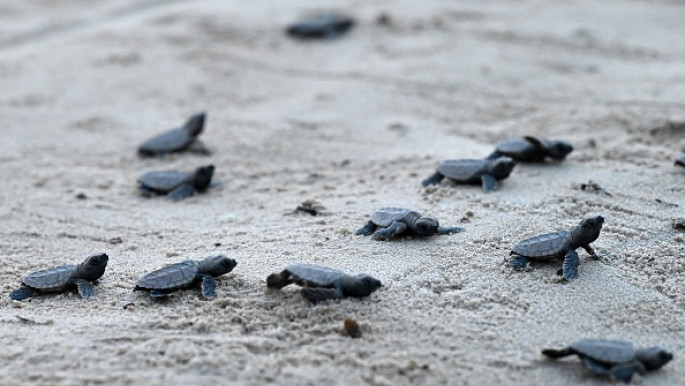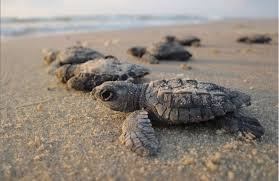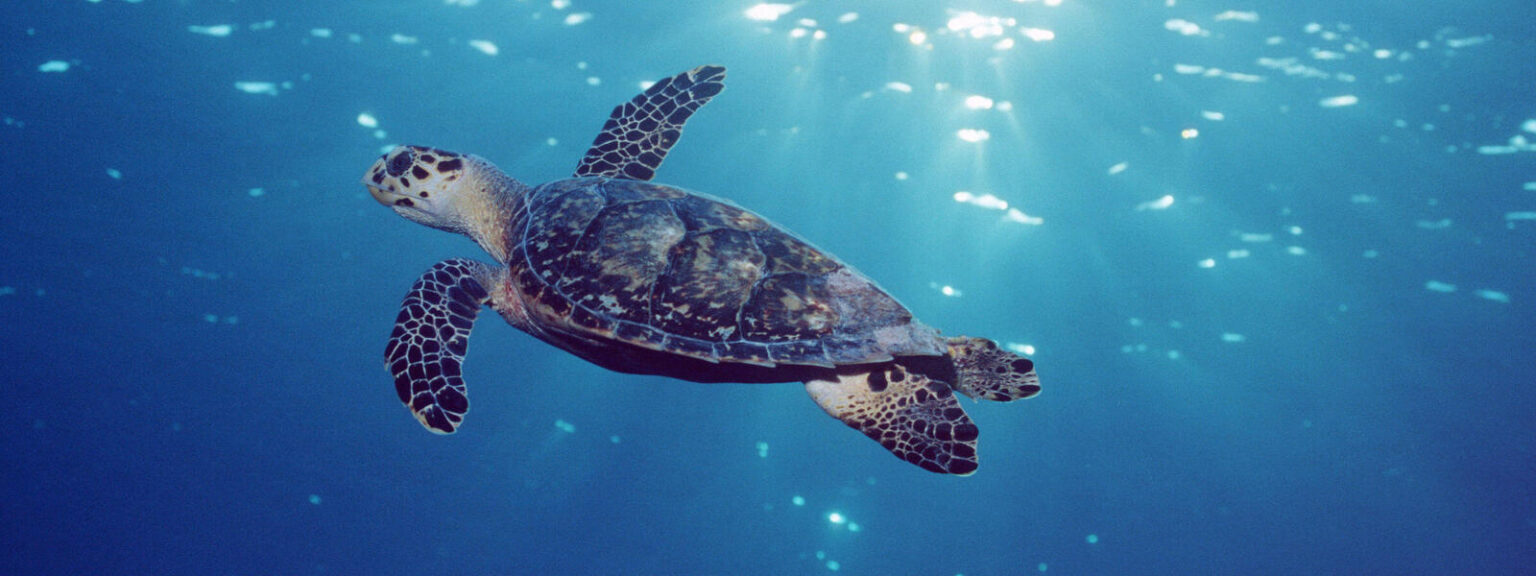Hawksbill Turtle Hatching have brought a wave of environmental hope to Qatar as Qatar Museums successfully released a group of endangered hawksbill turtle hatching at Fuwayrit Beach. This initiative is part of a broader marine conservation effort aimed at protecting endangered species and raising ecological awareness among citizens and visitors.
Fuwayrit Beach, known for its quiet beauty and clean waters, was the perfect backdrop for this symbolic event. As hatching slowly crawled toward the sea, they represented more than just a step into the wild they symbolised a critical push toward environmental action and protection of marine biodiversity in the Gulf region.
This initiative is a collaboration between Qatar Museums and the Ministry of Environment and Climate Change. Their shared goal is to highlight the importance of conserving endangered species like the hawksbill turtle while engaging the community in sustainable practices.
What Are Hawksbill Turtles?
The hawksbill turtle is a small to medium-sized sea turtle species recognised by its sharp, pointed beak and beautiful patterned shell. These turtles are critically endangered, with their population steadily declining due to illegal trade, pollution, climate change, and habitat destruction.
Hawksbill turtles mainly live in coral reef areas and are essential to the marine ecosystem because they help maintain the health of coral reefs by feeding on sponges and other invertebrates. Their presence supports biodiversity and helps balance ocean life.

Why Are Hawksbill Turtle Hatchings Important?
Hawksbill Turtle Hatching are rare, especially in regions like the Gulf where environmental stress and human activity affect turtle nesting areas. The release of these hatching is an indication that conservation efforts are working. Here are 7 positive impacts of this event:
1. Boosts Marine Conservation Awareness
The release of hawksbill turtle hatchlings raises public awareness about the endangered status of these creatures. Educational programs and live events allow communities to connect emotionally with marine life, encouraging them to support long-term environmental protection.
2. Highlights Qatar’s Environmental Responsibility
Qatar Museums, through its “Nature and Environment” programs, is positioning the country as a responsible leader in ecological initiatives. Events like these show that Qatar is actively working to meet sustainability goals and protect endangered species.
3. Supports Biodiversity in the Region
Each successful hatching and release of a hawksbill turtle helps strengthen biodiversity in Qatar’s marine environments. Turtles play a vital role in balancing the ocean’s ecosystem, which directly affects fishing, tourism, and the general health of the sea.
4. Promotes Eco-Tourism in Qatar
The focus on Hawksbill Turtle Hatching and marine protection can attract Eco-conscious tourists who are interested in wildlife and conservation. Fuwayrit Beach becomes more than just a weekend destination it turns into a learning site for ecological responsibility.
5. Inspires Youth to Take Action
Children and students who witness or learn about these hatching often become more conscious about their environmental impact. Schools and families are using such events as teaching moments, creating a new generation of environmentally-aware citizens.
6. Reduces Risk of Extinction
Each batch of hatch lings increases the odds of hawksbill turtles surviving and reproducing. Since the global population is critically low, every hatching counts toward reversing the threat of extinction and securing the species’ future.
7. Fosters International Environmental Collaboration
Qatar’s conservation work, including Hawksbill Turtle Hatching, attracts international attention and builds partnerships with global environmental organisations. This cooperation brings in research, funding, and technical support to scale marine protection efforts.
Challenges to Hawksbill Turtle Survival
Despite positive news, hawksbill turtles still face significant threats. Marine pollution, especially plastic waste, can cause turtles to mistake debris for food. Rising ocean temperatures also impact turtle nesting patterns and egg survival rates. Moreover, human interference during nesting season can disturb the natural process.
That’s why Qatar Museums and its environmental partners are working on more structured policies, including beach protection zones, public education campaigns, and clean-up drives. These efforts ensure that Fuwayrit Beach and other nesting sites remain safe for future turtle generations.

Community Participation is Key
Qatar’s marine conservation efforts are most effective when the local population is involved. Authorities are calling on beachgoers, students, and families to:
- Avoid touching turtle nests and hatchlings
- Participate in clean-up activities
- Report any turtle sightings to conservation teams
- Avoid using artificial lights on nesting beaches at night
By encouraging responsible behaviour, the country ensures that each release of Hawksbill Turtle Hatching is followed by a safe journey to the sea.
A Stronger Environmental Vision for Qatar
Qatar Museums’ efforts go beyond a one-time release. They are planning long-term conservation projects, awareness exhibitions, and environmental campaigns. These programs are aligned with Qatar National Vision 2030, which includes sustainability and environmental development as core goals.
Events like these bring citizens, researchers, and tourists together, reminding everyone that even small actions like protecting a turtle hatch ling can contribute to global environmental change.
Conclusion
Hawksbill Turtle Hatching at Fuwayrit Beach are not just about saving turtles they are about saving ecosystems, encouraging public participation, and building a sustainable future. With continued dedication and public awareness, Qatar is making strong strides toward becoming a global leader in marine conservation.
Let this event be a reminder that every life matters, and through collective efforts, even endangered species like the hawksbill turtle can find their way back to safety.
Do follow Gulf Magazine on Instagram
Also Read – Beating the Scorching Heat: Doha’s Cool Solution to 40 °C Days



